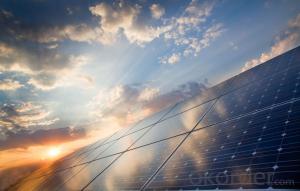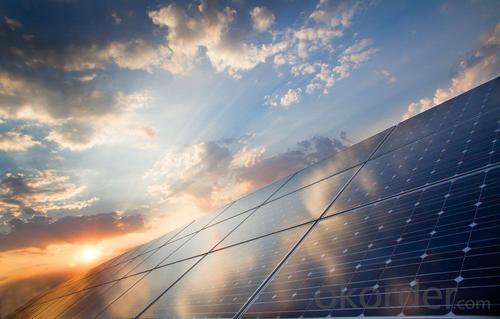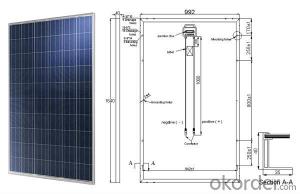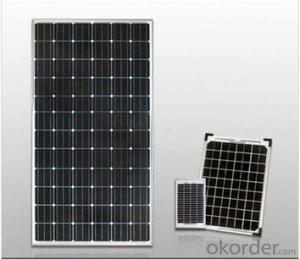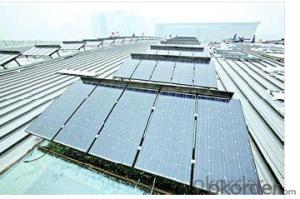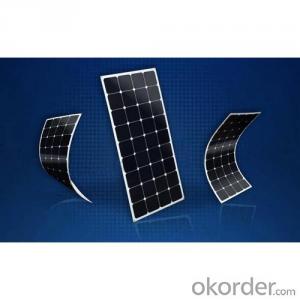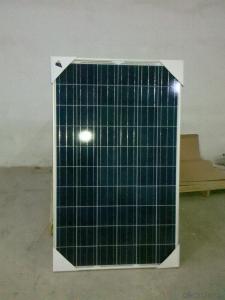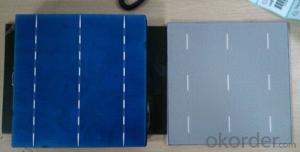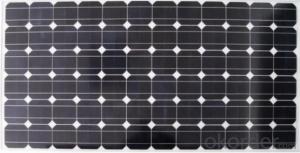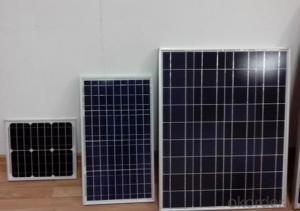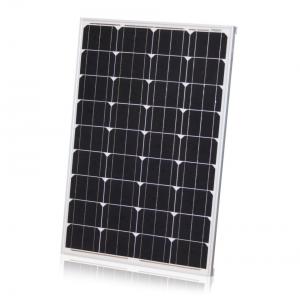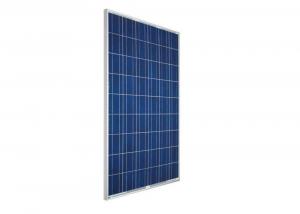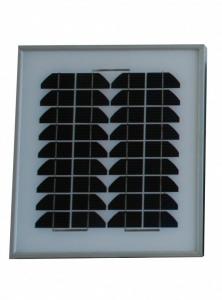Custom Shaped Solar Polycrystalline 156mm Series (160W-200W)
- Loading Port:
- Shanghai
- Payment Terms:
- TT OR LC
- Min Order Qty:
- 1000 watt
- Supply Capability:
- 20000000 watt/month
OKorder Service Pledge
OKorder Financial Service
You Might Also Like
Specification
1.Structure of Solar Module Description
Solar Polycrystalline 156mm Series (160W-----200W)
2.Characteristics of the Solar Module
| Max Power Voltage Vmp (V) | 35.6 | 35.8 | 35.8 | 35.6 | 36.0 |
| Max Power Current Imp (A) | 4.50 | 4.75 | 4.75 | 5.06 | 5.56 |
| Open Circuit Voltage Voc (V) | 43.4 | 43.6 | 43.4 | 43.4 | 44.0 |
| Short Circuit Current Isc (A) | 4.82 | 5.16 | 5.41 | 5.41 | 5.95 |
| Max Power Pm(W) | 160 | 170 | 180 | 190 | 200 |
3.Limits of the Solar Module
Operating Temperature ﹣40℃to+85℃
Storage Temperature ﹣40℃to+85℃
Max System Voltage 700V
4.Specifications of the Solar Module
| Power | 160W/170W | 180W/190W/200W |
| Dimension | 1200x992x35mm | 1330x992x35mm |
| Weight | 14.6kg | 16.2kg |
| Tolerance | ±3% | ±3% |
The dimension of the modules can be changed according to the demand of clients
5.Guarantee of the Solar Module
| Products Guarantee | 2 yrs free from defects in materials and
workmanship |
| Performance Guarantee | No less than 90% within 10yrs and no less than 80% within 20yrs |
| Certificates | IEC,ISO,TUV,CE |
6.Applications of the Solar Module
1.Electricity
2.Heat energy
7.IMages of the Solar Module

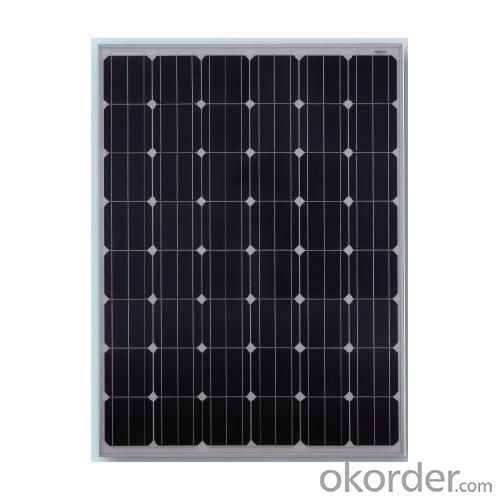
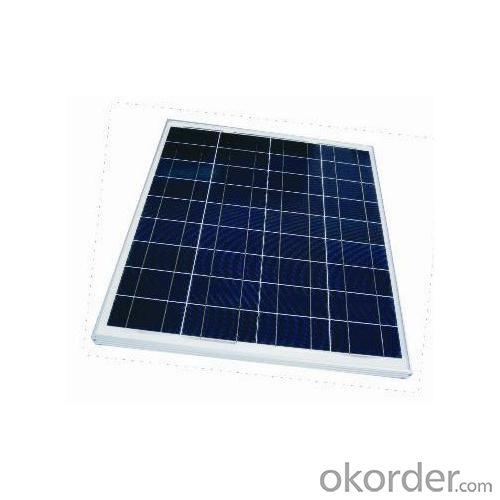
FAQ
1. Q: Do you have your own factory?
A: Yes, we have. Our factory located in Jiangyin city, jiangsu province.
2. Q: How can I visit your factory?
A: Before you take off from your country, please let us know. We will show you the way,or arrange time to pick you up if possible.
3. Q: Do you provide free sample?
A: Usually we do not offer free sample
4. Q: Could you print our company LOGO on the nameplate and package?
A: Yes, we can do that.
- Q: Are solar panels environmentally friendly?
- Yes, solar panels are environmentally friendly. They produce clean and renewable energy by harnessing sunlight, which reduces reliance on fossil fuels and decreases greenhouse gas emissions. Additionally, solar panels have a long lifespan and can be recycled, further minimizing their environmental impact.
- Q: Can cold light make solar panels power
- Solar power generation There are two ways of solar power generation, one is the light - heat - electricity conversion, the other is the optical - electrical direct conversion.
- Q: Can solar panels be installed on hospitals or healthcare facilities?
- Yes, solar panels can definitely be installed on hospitals or healthcare facilities. In fact, many hospitals and healthcare facilities around the world have already embraced solar energy as a sustainable and cost-effective solution. Solar panels provide a reliable source of clean energy, helping these facilities reduce their carbon footprint and dependence on traditional energy sources. Additionally, solar power can contribute to long-term cost savings, allowing hospitals to allocate more resources towards patient care and medical services.
- Q: What about sources for straight forward solar powered products? Excluding toys, garden frogs and outdoorpath lights I have found few useful items for the home. What I have found are solar panels for under $00 each, inverters, rechargeable indoor lights and a few camping/RV products that are interesting. It seems to me that these could help me start to wean the family off the power company. I can't afford to go cold turkey and cover my roof with solar panels and I don't think the HOA would allow me to even if I could. Is anyone using solar on a small scale?
- I okorder Hope this helps.
- Q: in the afternoon sun heat increases to high level due to which the panels heats up very high now my question is this heat will effect the panels life time and will damage the panels or not ??
- Most experts believe solar electric modules have a lifespan of at least 25 to 30 years and most manufacturers provide a warranty for this period. However, the truth is that we don't really know for sure since most modern solar panels have not been in existence that long. Many experts believe the actual number could be much higher, possibly as much as 50 years. What is very clear is that solar modules are extremely durable and lose very little of their energy generating capacity over time. From: bit.ly/tpTfK
- Q: Can solar panels be installed on a recreational vehicle (RV)?
- Yes, solar panels can be installed on a recreational vehicle (RV). Installing solar panels on an RV allows for the generation of electricity from sunlight, providing a renewable and independent power source while on the go. This is particularly useful for boondocking or camping in remote locations where access to traditional power sources may be limited.
- Q: How to Compare Solar Panels? ?
- Every okorder for links and faq's.
- Q: im trying to run my house with with solar panels, is it possible? if so please let me know how....i have a 6000 w inverter
- No, okorder /
- Q: Okay, I think I understand what I'm doing, but I want to set up some solar panels on the roof of my garage, the building that gets the most sun, and I want to make sure all my math is correct in determining number of megawatts per year. However, my knowledge of electrical terms in quite n00bish, to say the least.Here is what I think I should be doing.The solar cells come at .75 Watts average power.I will install 4 panels of 64 cells each, with a total of 256 cells.
- For comparison, 36 of these make a normal 2V x 50W panel. Note they are not tabbed. This means you have to find a way to connect them yourself. The tabs are probably spot welded on by the suppliers. A supplier below has kits of these with tabs, as needed to connect them together. These are not suitable for grid connect, because the higher voltage needed makes do it yourself panels a dangerous and litigious thing to have on your roof. Maybe you could buy a smaller pack from the link below to compare tabbed and untabbed and work out what to do. Your power calculation is a bit incorrect because the sun is only present some of the time. The 36 cell module would produce 50W when square on to the full sun. The sun may be out for around 2h a day in some places and times of the year. However it is the equivalent of 5h full sun, because of the changing angle throughout the day. Look this up on the internet for your region. Temperate zones may be a lot less. One pack in your link is 36x3 = 08 cells. Thus 50W per pack x 5h a day gives 750Wh per day and 274KWh/y. In reality it will always be less because of regions, weather, clouds, dust, inefficiencies, aging of cells.
- Q: How much space is required to install solar panels?
- The amount of space required to install solar panels depends on various factors such as the size and type of panels, energy requirements, and available sunlight. Generally, a typical residential solar panel system requires anywhere between 100 to 400 square feet of unobstructed roof space per kilowatt of installed capacity. However, it is best to consult with a solar installer to determine the exact space requirements based on your specific needs and site conditions.
Send your message to us
Custom Shaped Solar Polycrystalline 156mm Series (160W-200W)
- Loading Port:
- Shanghai
- Payment Terms:
- TT OR LC
- Min Order Qty:
- 1000 watt
- Supply Capability:
- 20000000 watt/month
OKorder Service Pledge
OKorder Financial Service
Similar products
Hot products
Hot Searches
Related keywords
